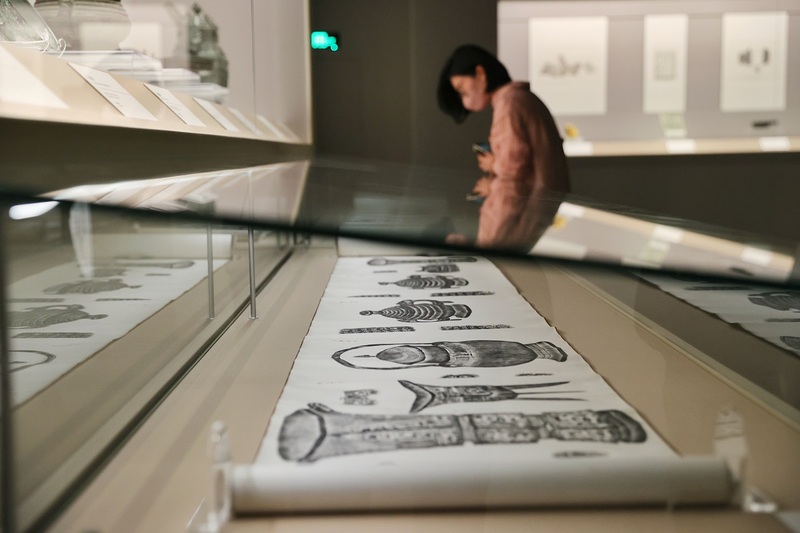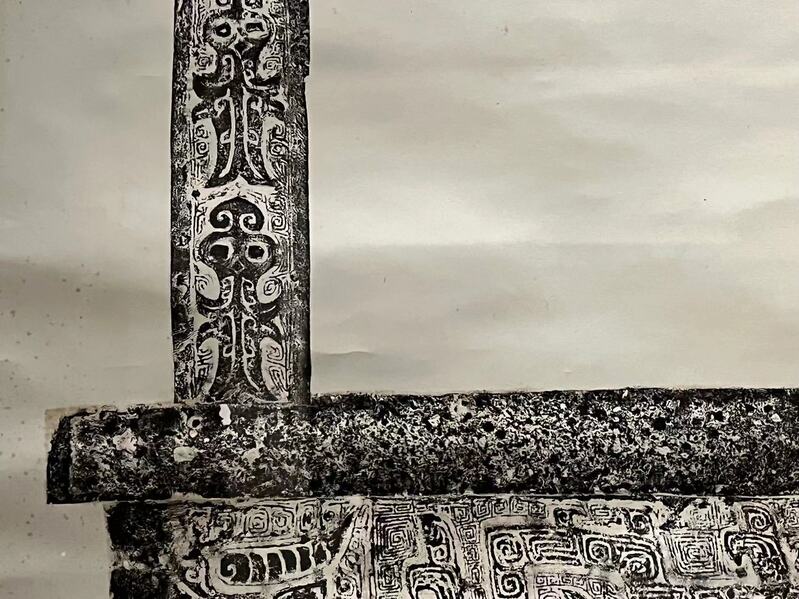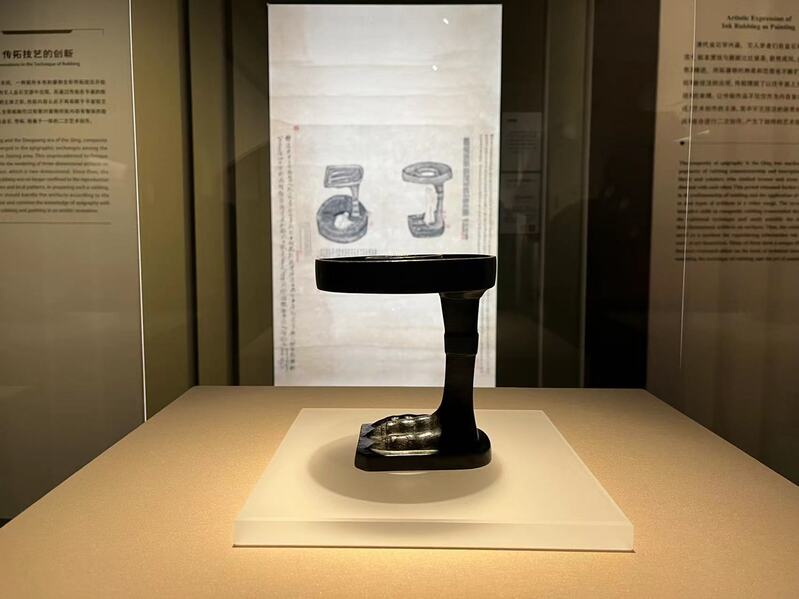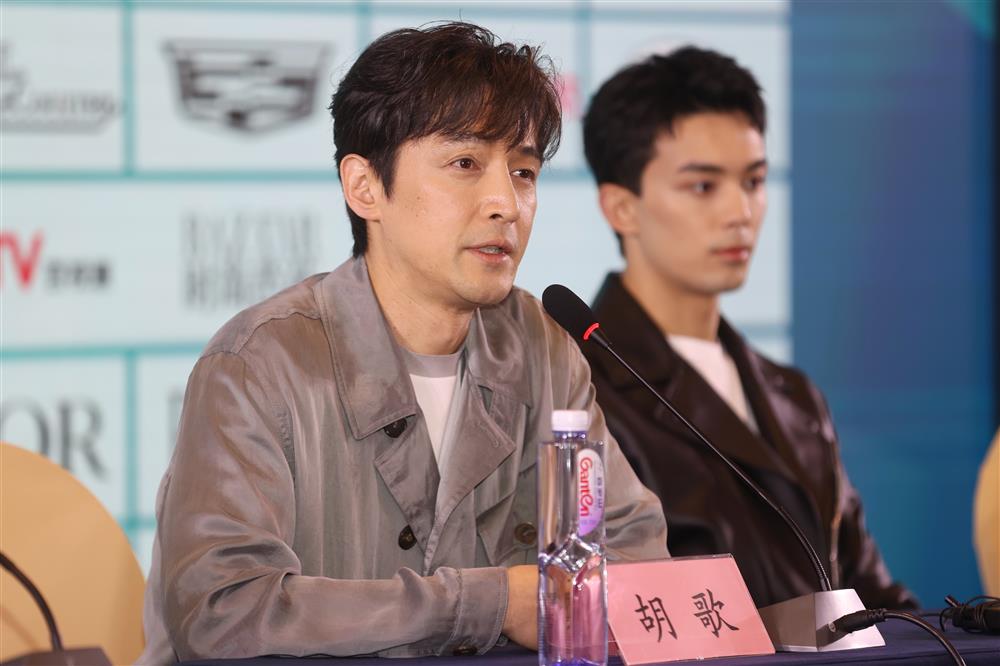In ancient China, you can take photos and make copies! Why are niche professional exhibitions popular? Shangbo will launch night club skills | China | Welcome
How to accurately "copy" characters in ancient China? How can a rare bronze artifact be fully reproduced on paper, even with intricate patterns and patterns?
Although there were no photocopiers or cameras in the past, the technique of inheriting and developing gold and stone can turn these wishes into reality. The new exhibition "Keeping Up with the Times - Exhibition of Gold and Stone Transmission and Expansion Techniques" launched by the Shanghai Museum will showcase to the public this technique that is still used in various fields such as cultural relic research.
The Jinshi Chuantuo Art Exhibition launched on the Shanghai Expo and the ongoing "Yuchu Liufang: Shanghai Museum Collection of Song and Yuan Ancient Books" exhibition were both considered niche and professional, but they have attracted a large number of audience attention. The second exhibition "Empirical China" being held at the same time on Shangbo is even more popular. Every day, 10000 reservation slots are released one week in advance on the Weibo platform, but they are all sold out. It is reported that from July 7th to August 20th, Shangbo will set up a night club every Friday to carry out the "Museum Wonderful Night" activity.
The Ancient "Copier"
Entering the exhibition hall located on the 4th floor of the Shanghai Museum, there is a row of display cabinets in the center, displaying 7 bronze artifacts with various shapes and intricate patterns. On the long scroll spread out on the display cabinet below, the painted objects correspond one-to-one with these bronze vessels. The creases and patterns on the objects on the roll are surprisingly identical to the actual object. For example, a late Shang Dynasty wine vessel not only has a relief animal face pattern on its entire body, but also a handle and a lifting beam, which are displayed one by one in the painting.
This long scroll is a long lost Qing Dynasty collection of ancient paintings called "Jiezhai Collection". Jiezhai is the residence name of Wu Daqian, a collector of gold and stone in the late Qing Dynasty. The "Jiezhai Collection of Ancient Paintings" not only depicts the scene of Jiezhai in the form of painting, but also collects the full form and inscription rubbings of Wu Daqian's collection of gold and stone relics in the long scroll attached to the scroll. Some of the relics are stored in the Shanghai Museum. In this exhibition, Shangbo will showcase the rubbings from the original artifacts in comparison.

Exhibition of the Ancient Map of Jiezhai Collection in Comparison with Cultural Relics
Such details are not actually created through drawing. Jinshi Zhuantuo is a unique "copying" technique invented in ancient China. In the video of the exhibition, the reporter saw that the craftsmen tightly covered the gold and stone objects with paper, then applied ink to the packaging, repeatedly wiped and lightly tapped, and printed the shapes, patterns, inscriptions, and other contents of the objects onto the paper. Many people have had this experience when they were young: pressing a piece of paper onto a coin and repeatedly rubbing it with a pen, the pattern of the coin will appear on the paper. This is the simplest inheritance technique.
The technique of transmitting and expanding gold and stone was first developed for the preservation and dissemination of historical materials. Since the pre Qin period, a large amount of historical data in China has been recorded on gold and stone. The technique of spreading and spreading these contents can be preserved and disseminated through paper and ink. Although there is no clear indication of the exact time when this technique was developed, the historical community generally believes that it was developed as late as the Southern and Northern Dynasties period. Currently, the earliest known rubbings with a clear chronological record are remnants of the Tang Taizong Li Shimin's "Hot Spring Inscription" rubbings.
The rubbings of Simu Wufang Ding clearly show the decorative patterns
In the exhibition hall, the large rubbings of the Simu Wufang Ding are eye-catching. The rubbings not only restore one side of this bronze cauldron, but also have very clear patterns on it. At this exhibition, the rubbings of the "Three Treasures of the Sea" Da Ke Ding, Da Yu Ding, and Mao Gong Ding will once again gather. The curator of this exhibition and the curator of the Bronze Research Department of the Shanghai Museum, Li Kongrong, is also the third generation inheritor of intangible cultural heritage inheritance techniques in the Shanghai Museum. According to him, the inscriptions and decorations on gold and stone that have been passed down are even clearer and easier to recognize than photos, and are still important materials for cultural relic research to this day.
From "copying" to creation

In the exhibition hall, the Jingning Yanzu Lantern from the Western Han Dynasty features a unique design with the Yanzu supporting the lamp panel. On the painting behind it, there is a monk on each of the two goose footed lanterns, one upside down and one upright, who is cleaning the objects. The goose footed lamp in the painting is a continuation of tradition, and there is an inscription on the outer bottom of the inverted lamp panel, which records that this lamp was manufactured in the first year of Jingning and belonged to the Empress's Palace.
This painting is a famous work of the full form expansion technique and the late Qing Dynasty's "Clear Lamp Painting". During the reign of Emperor Daoguang of the Qing Dynasty, collector Cheng Hongpu repeatedly invited the representative figure and monk Liu Zhou, who was in the development of the Quanxing Tuo technique, to inherit and develop over a thousand pieces of bronze ware. The monk depicted in the "Lamp Picking Diagram" is actually Liu Zhou himself.
The Original Cultural Relic of "Picking Out the Lantern": Jingning Yanzu Lantern from the Western Han Dynasty
The original copy of the "Light Removal Diagram" is kept in the Shanghai Library, but it was not available due to scheduling conflicts. However, during the same period, the Jianzhao Yanzu Lantern was displayed in the same frame as the rubbings collected in the Shanghai Library, and the audience could see the Yanzu Lantern presented from different angles on paper. This is also the first time that two bronze goose footed lanterns collected in the Shanghai Expo have been exhibited together.
Li Kongrong introduced that after the invention of printing technology, the technique of transmission and expansion was gradually endowed with new functions. During the Qing Dynasty, the study of epigraphy flourished, and literati and scholars popularized the appreciation of rubbings. The types and scope of objects excavated continued to expand. During the reign of Emperor Jiadao of the Qing Dynasty, a technique of transmitting and expanding the full form of objects emerged among literati in the Jiaxing area. By transmitting and expanding the three-dimensional form of objects on flat paper, there was even the ability to take photos beyond copying. In the late Qing Dynasty, many literati and collectors, like Wu Dayuan and Cheng Hongpu, were willing to create excellent rubbings for their collections and share their research with their fellow enthusiasts, further promoting the development of the technique of rubbings. Some also combined rubbings with painting for secondary creation, and the "Light Picking Diagram" is a famous example.
Why are niche exhibitions popular?

It is reported that this exhibition mainly features 37 sets of precious cultural relics in the collection of the Shanghai Museum, and the Shanghai Library provides 3 sets of 6 precious cultural relics. At the early exhibition of Song and Yuan ancient books, some of the exhibits used the technique of inheriting and expanding gold and stone. The linkage between the two exhibitions has made many cultural and museum enthusiasts look forward to it.
When announcing the exhibition plan for the new year at the end of last year, Shanghai Expo stated that the two exhibitions were positioned as "small and beautiful" boutique exhibitions. In the eyes of many industry insiders, the two exhibitions are relatively niche and professional. However, the reporter saw on Weibo that the exhibition of ancient books from the Song and Yuan dynasties welcomed a large number of visitors, and many exhibition cabinets needed to wait in line. Yesterday, many visitors also consulted and observed outside the yet to be opened Chuantuo Art Exhibition, intending to make another appointment for a visit.
"Although the exhibition is niche in terms of expertise, the exhibits are rare and exquisite." In the exhibition hall of the Song and Yuan Dynasty Ancient Books Exhibition, Mr. Wu, a citizen, came with his two children to observe the exhibition. "For example, the 'Chunhua Pavilion Posts' left a deep impression on me as I was still in high school when I entered Tibet and went online. I definitely want to come and see it again. I heard that there was a Western Han Yan Foot Lantern at the new exhibition, and he became interested:' Now there are international brands producing similar products, and the aesthetic of ancient Chinese people was very avant-garde! '"
Another college student visitor, Liu Yu, said that what he saw in the niche exhibition was the vastness and profoundness of traditional culture, "filling in a lot of unknown knowledge.". She was deeply moved by the exhibition on the back of one page of "Wang Wengong's Collected Works" on the online blog. "The idea of recycling discarded paper has existed since ancient times." The illustration of an ancient book page in the exhibition also left a deep impression on her. "I bought a thread bound book, but I didn't expect there to be so many secrets hidden inside. For example, binding the name of the engraver into the center of the book page is not only an encouragement, but also a motivation."
Introducing Traditional Chinese Skills in English
The reporter noticed that the cultural relics presented at the Jinshi Chuantuo Art Exhibition were presented in both Chinese and English. It is reported that more and more foreigners are returning to Shanghai to visit museums. Chu Xiaobo, the director of the Shanghai Museum, stated that a large amount of content in the exhibition design is presented in both Chinese and English, which not only serves domestic audiences but also actively promotes Chinese culture to go global. "We welcome more international friends to learn about this traditional skill with a long history in China."

Yesterday noon, despite the high temperature, the audience queuing up at the entrance of the Shanghai Expo in an orderly manner remained enthusiastic. Although the number of online booking slots has been adjusted to 10000 people per day, there are still many viewers who wait online for a week to make reservations. It is reported that from July 7th to August 20th, Shangbo will set up a night club every Friday to carry out the "Museum Wonderful Night" activity. Each night club is closed from 18:00 to 21:00 on Fridays, and entry is stopped at 20:00. During this period, the "Empirical China" exhibition located on the first floor, the Song and Yuan Dynasty Ancient Books exhibition on the second floor, and the Gold and Stone Inheritance and Development Art exhibition on the fourth floor will all be open. The Chinese Ancient Bronze Museum and the Chinese Ancient Ceramics Museum will also be open. The nightclub is limited to 2000 people per night and will be booked in real name through time slots and online. The appointment vouchers for day and night clubs cannot be used interchangeably.
In addition, several "star exhibits" that were originally scheduled to be replaced in advance at the "Empirical China" exhibition will extend the exhibition time. The jade cong, divine human animal face patterned turtle headed combination jade axe, and turtle headed combination jade scepter unearthed from Tomb 12 of the Fanshan Site, the translucent jade crown shaped vessel unearthed from Tomb 16 of the Fanshan Site, and the twisted silk patterned jade bracelet unearthed from Tomb 11 of the Yaoshan Site were originally scheduled to end their exhibition period on July 9, while the stone pig unearthed from the Lingjiatan Site was originally scheduled to end its exhibition period on July 20. In response to the enthusiasm of the audience for the exhibition, after coordination and communication, these exhibits will be uniformly postponed to a new exhibition on July 23rd.




